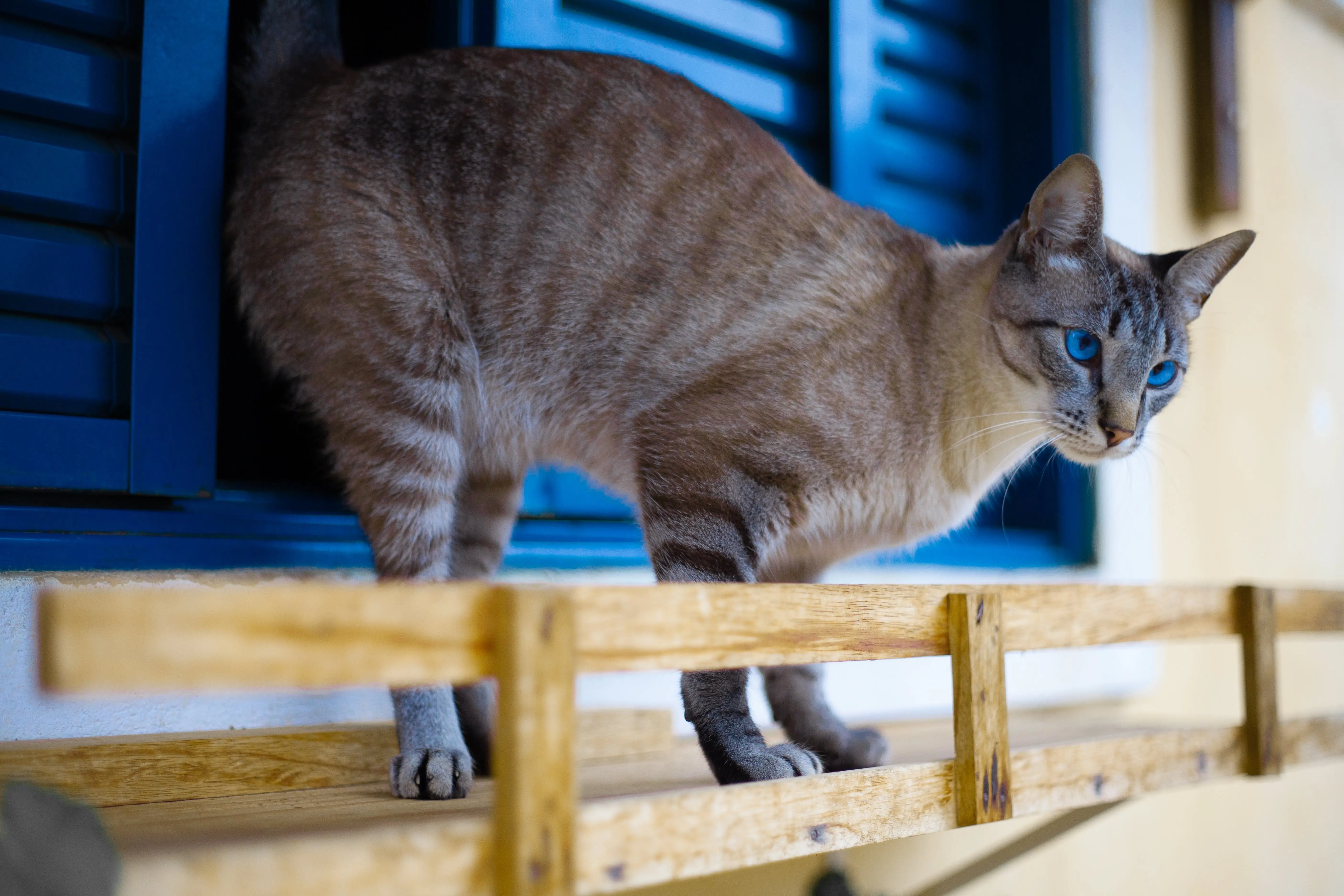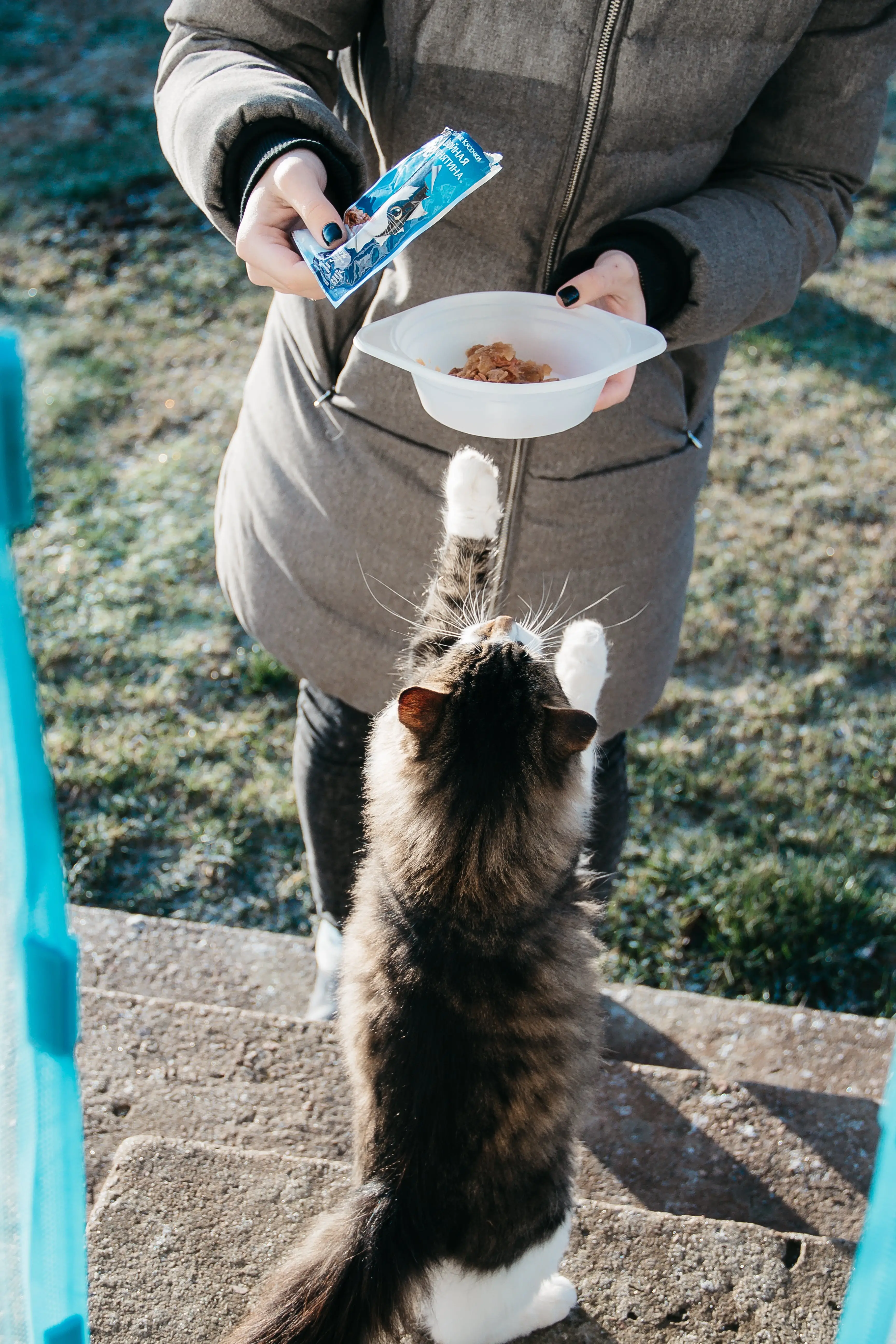- Get link
- X
- Other Apps
- Get link
- X
- Other Apps

Are you considering adding a furry family member to your household? Look no further than a cat! These elegant and independent creatures make wonderful companions for any household. Whether you are a single person looking for a loyal friend or a busy family seeking a low-maintenance pet, a cat is the perfect addition to your home. In this article, we will explore the joys of having a feline family member and provide tips on how to create a harmonious environment for both you and your beloved cat.
Why Cats Make Great Family Members

They Are Low-Maintenance
Cats are known for their independence and self-sufficiency. Unlike dogs, they do not require frequent walks or outdoor playtime. Cats are perfectly content spending most of their day lounging around the house, which makes them ideal pets for busy families. Additionally, their grooming habits mean that they don't need to be bathed often.
They Provide Companionship
Despite their reputation as solitary animals, cats can form strong bonds with their human family members. They are affectionate and enjoy being petted and cuddled. This makes them great companions for individuals living alone or for families with children.
How to Bond with Your Cat
- Spend time playing with your cat using toys such as strings, feathers, or laser pointers.
- Give them physical affection through gentle strokes and head scratches.
- Talk to your cat in a soothing voice and use positive reinforcement when they display good behavior.
Examples of Close Relationships Between Cats and Their Humans
- Many studies have shown that cats can sense when their owners are feeling down and are quick to offer comfort and support.
- Some cats have even been trained as therapy animals and regularly visit hospitals and nursing homes to provide emotional support to patients.
- Cats have also been known to form close bonds with other animals, such as dogs or other cats, making them great additions to multi-pet households.
They Are Easy to Train
Contrary to popular belief, cats are actually quite trainable. With patience and positive reinforcement, you can teach your cat to do tricks, use a litter box, and even come when called. This makes them a suitable pet for families with young children who may be eager to participate in training their new furry friend.
Tips for Training Your Cat
- Use treats as rewards for good behavior.
- Be consistent and patient.
- Start with simple commands and gradually increase the difficulty.
- Never use physical punishment as a form of discipline.
Comparison Between Cats and Dogs in Terms of Trainability
While dogs may be easier to train in some aspects, such as obedience and following commands, cats can also learn various tricks and behaviors. The key is to understand their natural instincts and work with them rather than against them. For example, cats are naturally drawn to high places, so teaching them to jump through hoops or onto platforms is a great way to involve their natural abilities in training.
How to Create a Safe and Happy Environment for Your Cat

Providing a Comfortable Living Space
Cats are territorial animals and need a space that they can call their own. Here are some ways to create a safe and comfortable living space for your feline family member:
- Provide a scratching post to satisfy their natural instinct to scratch and mark their territory.
- Create cozy spots around the house for them to nap, such as a window perch or a soft cat bed.
- Keep toxic plants and hazardous materials out of reach.
- Provide plenty of fresh water and clean litter boxes daily.
Examples of Cat-Friendly Spaces
- A sunny windowsill with a comfortable cushion can serve as the perfect spot for your cat to bask in the sun and watch the world go by.
- A cat tree with different levels and hiding spots can provide endless entertainment for your cat.
- A designated play area with toys and scratching posts can help keep your furniture safe from your cat’s claws.
Maintaining a Healthy Diet
A proper diet is essential for your cat's overall health and well-being. Here are some guidelines for choosing the right food for your feline family member:
- Look for high-quality, protein-rich foods specifically formulated for cats.
- Avoid foods that contain fillers, by-products, or artificial ingredients.
- Consult with your veterinarian for recommendations on portion sizes and feeding schedule.
Comparison Between Wet and Dry Cat Food
Both wet and dry food have their own benefits. Wet food provides more moisture and can be beneficial for cats who struggle to drink enough water. Dry food, on the other hand, can help keep your cat's teeth clean and strengthen their jaw muscles. It is best to offer a combination of both in your cat's diet for optimal nutrition.
Tips for Introducing Your Cat to Your Family

Adding a new pet to your household can be an exciting yet overwhelming experience for everyone involved. Here are some tips to help make the transition smooth and stress-free for both you and your cat:
- Slowly introduce your cat to each family member, giving them time to get used to each person's scent and presence.
- Teach children how to interact with cats properly, such as not pulling their tail or playing too rough.
- Provide a safe space for your cat to retreat to if they feel overwhelmed or anxious.
- Be patient and give your cat time to adjust to their new environment.
FAQ
Q: Are there any breeds of cats that are better suited for families?
A: While every cat has its own unique personality, some breeds are known for being more social and friendly towards children and other pets. These include the Maine Coon, the Ragdoll, and the American Shorthair.
Q: Can cats get along with other pets?
A: Yes, cats can form close bonds with other animals, including dogs and other cats. It is essential to introduce them slowly and supervise their interactions until they are comfortable with each other.
Q: Do cats need to be spayed or neutered?
A: Yes, spaying and neutering your cat not only helps control the pet population but also has health benefits for your feline family member, such as reducing the risk of certain cancers and behavioral issues.
Q: How often should I take my cat to the vet?
A: It is recommended to take your cat for a routine check-up at least once a year, even if they seem healthy. This allows your veterinarian to monitor their overall health and detect any potential issues early on.
Q: Can cats be trained to use a litter box?
A: Yes, most cats can easily be trained to use a litter box by providing them with a clean and accessible spot and using positive reinforcement when they use it correctly.
Conclusion

Having a cat as a family member can bring endless joy and companionship into your household. By understanding their natural behaviors, providing a safe and comfortable environment, and being patient and consistent in training, you can create a harmonious bond between you and your feline friend. Remember, adopting a cat is a commitment that requires love, patience, and responsibility, but the rewards far outweigh the challenges. So go ahead and welcome a new furry family member into your home – you won't regret it!
- Get link
- X
- Other Apps
family of kittens cats for families
Comments
Post a Comment